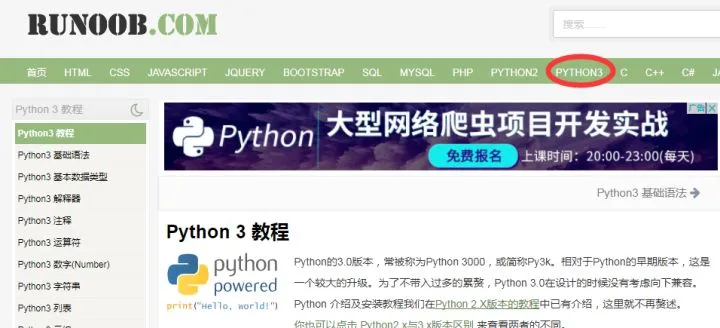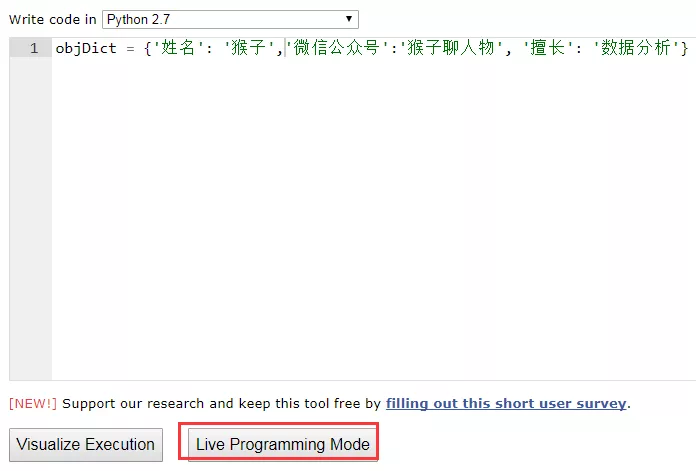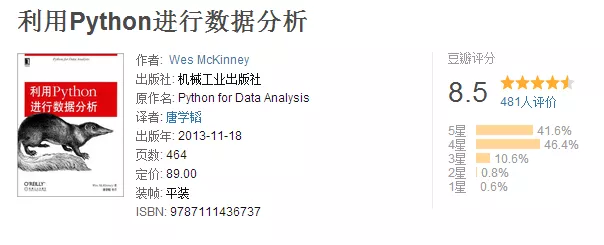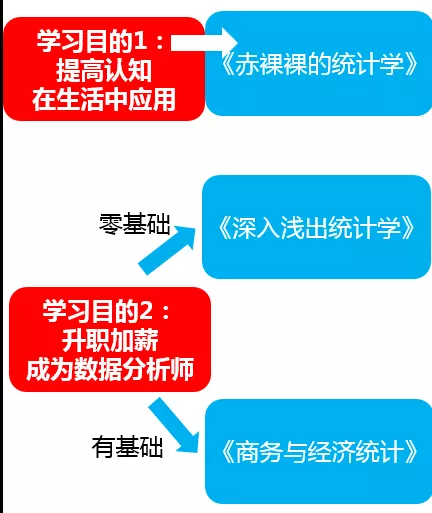How long does it take to learn python by myself?
I don't like things that recommend a bunch of reference materials as soon as they come up, it will only make beginners more confused. Just like a baby, you tell him there are 100 ways to learn to walk. He will only become disinterested in walking. What he wants is only one of the most effective ways to learn to walk, not 100 ways.
Similarly, the following is one way I just started to learn python by myself, and only one method is needed.
Step 1, the basics
Many people like to write a thick book to read. Although they have finished reading, they still don't know how to use Python. This is the biggest sadness.
Sad? Are you sad?
In fact, you only need to read this tutorial on the rookie tutorial website. The website address:
Python3 Tutorial | Novice Tutorial

If you are a newbie just starting to learn programming, and you don’t understand it, you can read it a few times. Although this process will be tedious, it is necessary for you to establish a solid programming mindset.
Auxiliary tools at this stage:
When you see a code or concept that you cannot understand, you can copy the code to the following website, which will display your code graphically for your understanding: pythontutor.com/visuali
If you don't know how the code runs in memory, you might as well copy it to Tutor and execute it visually to deepen your understanding.
For example, if you are learning the dictionary data structure in Ptyhon, but do not understand the concept, then you can enter the code in the book and click the button in the red box below.

It will run the following graphical results, understand the concept against the graphics, don't be too cool.


Step 2: Advanced data analysis
The first step above has laid the foundation of Python programming, and now we enter the learning phase of data analysis. It is enough to recommend a book "Data Analysis Using Python". This book has a score of 8.5 on Douban.

I saw that the book involved when the knowledge of statistical probability was incomprehensible, at this time, in turn, learn the knowledge of statistical probability.
The wrong way for many people to learn is to learn statistical probability first, and then learn programming tools for data analysis (Excel, Python, R). Finally, complaining is too difficult to learn.
This is actually the wrong learning method. Why is this?
There are two reasons:
1 ) Because many statistical probabilities talk about complicated mathematical formulas, but they don't talk about how statistical probability is applied in life. The result of this is that you learn a lot, but you also forget a lot.
2 ) Knowledge of statistical probability is the theoretical basis most of the time. If you don't use it with data analysis tools (Excel, Python, R), you will definitely not learn it.
For example, you have learned the theory of quartiles, but how to use it in practice, you do not know the tools of data analysis, of course you will not use it.
But if you know the tools of data analysis, the actual operation is just one line of code, and the quartiles are calculated. Of course you are excited, and your interest in learning comes up when you are happy.
Therefore, my suggestion and the correct way of learning is: first learn the basic data analysis tool usage, when encountering statistical probability knowledge, add this knowledge, and use the data analysis tool to realize it while learning.
Auxiliary tools at this stage:
If you want to learn Ptyhon by doing practical projects, you can try "5 Projects Suitable for Python Data Analysis Beginners":
Five data science projects to learn data science
- Advanced Data Analysis-Knowledge of Statistical Probability
The learning of statistical probability is actually very simple, but many teachers and books make this stuff complicated. By learning the knowledge in the figure below, you can learn statistical probability:

Briefly explain, the above figure.
If your study purpose is to improve your cognition, apply statistical probability in your life to guide you to make the best choice when facing major decisions, you should read the book "Naked Statistics". Up.
If your purpose of study is to learn the basics of big data: statistical probability, and hope to become a data analyst and achieve the purpose of promotion and salary increase, then your study reference book is "In-depth understanding of statistics" or "Business and economic statistics" .
"Learning Statistics in Simple Languages" is suitable for people who have no basis in statistical probability. This book is interesting and simple enough.
If you have studied some statistical probability classes in school before, but finally returned the content of the class to the teacher, you should choose to read the book "Business and Economic Statistics" to reconsolidate your basic knowledge.
By learning advanced knowledge, you will no longer be a hard worker, and will help you achieve your annual salary increase goal.
- Where can I find help if I have difficulty studying?
As long as you study, you will encounter difficulties. What should you do if you encounter difficulties?
1 ) First, you need to use a certain search engine to find the problem (you know I’m not talking about Baidu), and you can generally find the answer to your question. It is really important to learn to search in English.
2 ) If you can't find the answer using a certain search engine, of course you have to ask the seniors for help. However, if you ask, no one will reply. In order to solve this problem, you can leave your question and I will reply when I see it.
3 ) Finally, remember that the purpose of learning Ptyhon is not to learn a programming language for the sake of learning a programming language. Your starting point should be what project you want to complete and learn with goals.
Recommended Posts